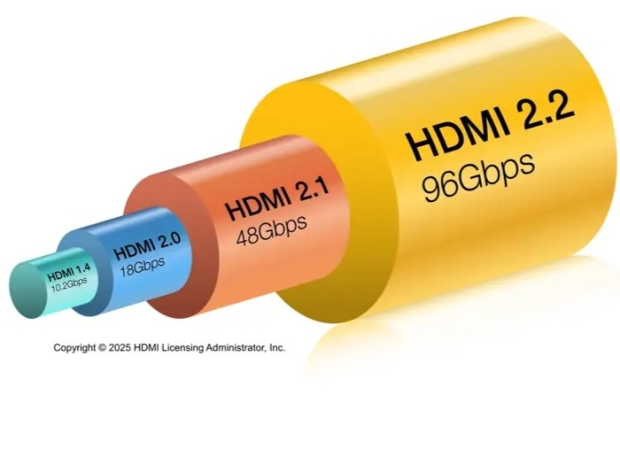This Ultra96 branding will be plastered on cables that meet the new transfer rate. It’s certified by the HDMI Forum, presumably to help the less tech‑savvy figure out which spaghetti supports their overpriced TV’s specs.
The bump in bandwidth opens the door for 16K at 60 Hz or 12K at 120 Hz if you’re happy with chroma subsampling. More realistically, punters will enjoy 4K at 240 Hz with full 12‑bit colour and no compression. DisplayPort 2.1b UHBR 20 gets close with 80 GB/s, but HDMI 2.2 just edges it, allowing uncompressed 8K at 60 Hz.
Naturally, there’s a catch. HDMI 2.2 is only as good as the cable and the hardware it runs on. Manufacturers can still slap an HDMI 2.2 label on devices without actually meeting the bandwidth requirements, which means unless the box screams "Ultra96", you might be getting HDMI 2.1 in disguise.
Thankfully, HDMI 2.2 is backwards compatible. That means Ultra96 cables will work with older HDMI ports and vice versa, but you’ll only get the best features when cable and device meet the full spec.
The standard also brings in something called Latency Indication Protocol (LIP), which is meant to fix lip‑sync issues in complex home theatre setups. If you’re running a mess of receivers, speakers and projectors, LIP might stop your dialogue from arriving after the actor’s lips have already moved.
First adopters are expected later this year, with AMD rumoured to be first out of the gate. The outfit’s new UDNA GPUs are tipped to feature HDMI 2.2 support, although probably not at full bandwidth if past behaviour is any guide.
Currently, only Radeon Pro cards support the full DisplayPort 2.1b UHBR 20 spec. The RX 9000 series is capped at 54 GB/s, and AMD might repeat that trick by reserving full HDMI 2.2 for its priciest workstation gear.


